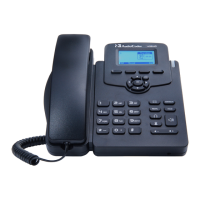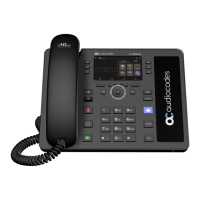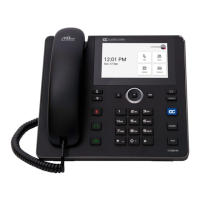Administrator's Manual 17. Configuring SIP Settings
Version 2.2.8 99 400HD Series IP Phones
Parameter Description
Switch back to Primary SIP proxy when available
[voip/signalling/sip/redundant_proxy/symmetri
c_mode]
[Only displayed if the 'Redundant Proxy Mode'
parameter is enabled (Primary-Fallback)]
The phone identifies cases where the primary
proxy does not respond to SIP signaling
messages. In these scenarios, the phone
registers to the redundant proxy and the
phone seamlessly continues normal
functionality, without the user noticing any
connectivity failure or malfunction with the
primary proxy.
[0] = Asymmetric (default). In this mode, the
primary proxy is assigned a higher priority for
registration than the redundant proxy. Once
the phone is registered to the primary proxy, it
sends keep-alive messages (using SIP
OPTIONS messages) to the primary proxy. If
the primary proxy does not respond, the
phone registers to the redundant proxy, but
continues sending keep-alive messages to the
primary proxy. If the primary proxy responds
to these keep-alive messages, the phone
re-registers to the primary proxy. Therefore,
the phone assigns the primary proxy a higher
priority for registration. If asymmetric mode is
configured and the primary server goes down,
an attempt will be made to revert to the
primary server.
[1] = Symmetric. In this mode, both proxies
are assigned the same priority for registration.
Once the phone is registered to a proxy, it
sends keep-alive messages to this proxy. The
phone switches proxies only once the proxy to
whom it has registered does not respond.
Therefore, the phone assigns both proxies the
same priority for registration. If symmetric
mode is configured and the primary server
goes down, you'll operate with the redundant
proxy without ever reverting to the primary
unless the redundant proxy also goes down.
In both modes, the following applies:
If the phone is not registered (i.e., if the proxy
server – redundant or primary – to which the
phone currently tries to register does not
respond), the phone attempts to register to an
alternative proxy. These attempts continue
until the phone successfully registers.
If this feature is enabled and the user reboots
the phone, the phone registers to the last
proxy to which it was trying to register, and not
necessarily to the primary proxy.

